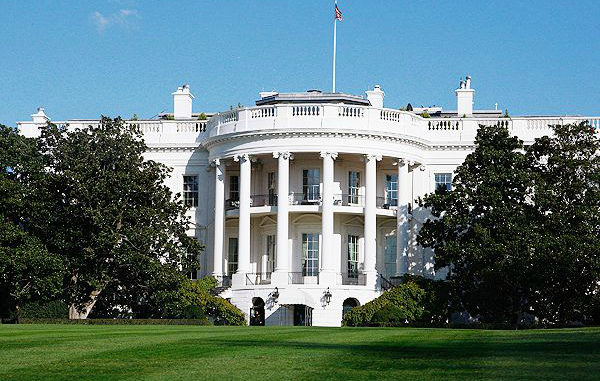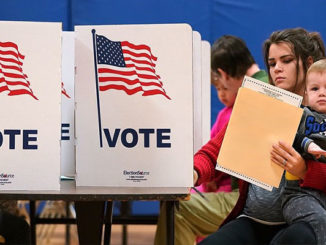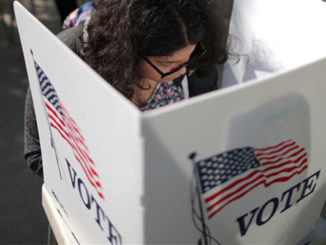
By Sean Trende & David Byler
What share of the Hispanic vote do Republicans need to win in 2016? Is it 44 percent, as some have argued? Is it 49 percent? Or maybe it is as low as 33 percent?
If you’ve followed debates about elections for the past few years, you’ve probably heard analysts give answers to these questions. But the truth is, none of these answers are clearly correct. The reasons are threefold: First, these sorts of projections often hold all else equal from 2012 – that is, they assume that the white, black and Asian vote shares won’t move. Second, the projections offered typically involve the shares of the Hispanic vote (or that of other groups) that Republicans would need to win in order to take the popular vote. But, of course, our elections are determined by the Electoral College, and as we’ll see, Hispanic voters are much less relevant for the Electoral College than the popular vote.
Finally, and perhaps most importantly, these sorts of analyses only focus on vote share – that is, what percentage of African-Americans vote for Republicans, or what share of Asian-Americans vote for Democrats. But the popular vote and Electoral College aren’t just affected by vote shares. They are also affected by turnout. So if the Republican share of the white vote increases, but the white turnout rate declines, Republicans could still perform worse overall in 2016 than in 2012.
So we’ve developed a tool, embedded below, that allows you to simulate the outcome of the 2016 elections, both in terms of the popular vote and the Electoral College. You can read the complete description of our methodology here. In the interest of space and readability, we’ll just give a general overview in this article.
We’d like first, however, to emphasize two things about the tool that are important to keep in mind if it is to be used appropriately. First, there is some estimation involved here, both within the datasets upon which we draw and in the way in which we adjust for differences in datasets.
Because of this, we envision this as more of a heuristic device than a literal tool. In other words, if you put in an outcome and the Democrats win the Electoral College, but that win is dependent upon a state where the Democrat wins by 0.1 percent, you shouldn’t become convinced that Democrats would actually win with the outcome that you input.
Second – and this gets into our explanation of how the model works – we assume “uniform swing” across states. In other words, if the non-Hispanic white share of the electorate increases in the model by a point, it does so in every state. In reality, however, these swings will likely not be uniform. While we have some ideas about where the white vote might improve more for Republicans than the national margin would indicate (Iowa, for example), as well as for Democrats (perhaps Arkansas, if Hillary Clinton is the nominee), there’s simply no way to incorporate that objectively into a model.
In any event, the key to operating the tool is the dashboard on top. It defaults to 2012 levels of turnout and support, by racial/ethnic group. Note that we’ve combined “Asian” and “Other,” which was necessitated by the different datasets we’ve used. You’ll also notice that the Democratic lead using the default numbers is about six-tenths of a point larger than the actual result was in 2012; this is demographic change at work.
The left column allows you to adjust the vote share that Republicans win of the various groups, while the right column allows you to adjust turnout by group. For reference, we’ve included a chart after the map that provides turnout and vote shares for the various racial/ethnic groups over time.
It’s as simple as that: Increase or decrease turnout for different demographic groups, as well as vote share, and see what effect it has on the election! But how do we make these calculations work? Again, the detailed explanation is here, but to make a long story short, we use data obtained from a website operated by Dr. Michael P. McDonald at the University of Florida, as well as data from the AEI/CAP/Brookings “States of Change” project (disclosure: Sean Trende sits on the advisory board) to estimate the likely Voting Eligible Population in various states. So these data give us, for example, an idea of how many African-Americans in a given state could vote, in theory.
We then use exit-poll data to determine actual turnout rates in states and nationally, as well as the vote shares won by Republicans in states and nationally. This required us to perform some estimation, because exit polls don’t cover every state and because not every racial group is tested in every state, but we believe we have workable estimates. (As explained in the full methodology description, using the Current Population Survey data for turnout would require us to meld two inconsistent datasets. We did, however, adjust the numbers you see in the control panel to match CPS numbers, so that the user could place them in historical context with the chart in the bottom.)
In any event, here is the control panel, map, and historical data chart:
There are probably an infinite number of articles that could be written about this. For now, we limit ourselves to four brief points.
First, note the limited electoral impact of Hispanic voters. All other things being equal, Republicans would have to fall to 8 percent of the Hispanic vote before another state flips to the Democrats (they would lose the popular vote by almost 10 points in this scenario). For all the talk of Texas potentially voting Democrat, that doesn’t happen until Republicans drop to 5 percent of the Hispanic vote.
On the other hand, Republicans would have to win 49 percent of the Hispanic vote to win the popular vote (with other vote shares and turnout rates being equal to 2012), but they would still lose the Electoral College, 289-249. Republicans would have to improve to 63 percent of the Hispanic vote before they would win the Electoral College. This is, incidentally, similar to findings from FiveThirtyEight in 2013.
Second, note the impact of a potential reversion to mean in vote share and turnout among African-American voters. While Republicans won only 4 percent of the black vote in 2008 and 6 percent in 2012, the typical Republican vote share is between 9 and 11 percent. Note also that, historically, African-American participation has lagged white participation by about six percentage points: Black participation lagged white participation by five points in 2000 and 2010, by six points in 1998, 2002, and 2014, and seven points in 2004. The gap was 11 points in 2006.
So the question is: Is the mid-single-digit vote share Republicans received in 2008 and 2012 the rule now? Likewise, is African-American participation going to be equal (or slightly ahead of) white participation going forward? Perhaps the best argument for a reversion to mean is that African-American voting patterns and participation rates in 2010 and 2014 looked an awful lot like those of 1998, 2000, 2002, and 2004. This suggests that President Obama’s popularity among African-Americans may not be transferrable.
On the other hand, perhaps, as some have suggested, there is a newly emerging, fundamental difference in voting patterns between the midterm electorate and the presidential electorate. We certainly don’t dismiss this possibility. After all, voting is habit forming, and after marginal voters have cast ballots in two presidential elections, are they really marginal voters anymore?
We could make a case in either direction, but that isn’t what we’re interested in here. Instead, we’re interested in what is at stake. If black participation falls back to six points below white participation, and Republicans win 10 percent of the African-American vote, the Democrats’ projected popular vote margin of 4.6 points shrinks to 2.2 points. (It is worth noting that the evidence that photographic identification laws or changes to early voting practices could bring about such a change, as some have suggested, is at best mixed.) Florida flips to Republicans, Virginia is a 0.4 percentage point margin for Democrats, and the Democratic margin in Ohio is a little more than a point. At that point, relatively small improvements among whites, Hispanics or Asians will win the race for the Republican candidate.
Third, we note that Republicans don’t have to put up a historically good performance among minority groups to win the election. Take the 2014 exit polls. If Republicans win demographic groups at the rates they did in that election, they would win the popular vote by around three points, and carry the Electoral College, 295-243. In this scenario, Nevada, New Mexico, and Wisconsin vote for the Democratic candidate by three points or less, while Colorado and Pennsylvania for the Republican candidate by three points or less.
Some would counter that putting up these vote shares in the midterm electorate is one thing; doing it in the presidential electorate is another. This may well be true (assuming there is no reversion to mean in turnout), but Republicans don’t have to win the election by three points (the 2014 exit polls actually underestimate Republican performance by a point, so the actual projected margin is probably four points), and don’t have to carry Colorado to win the presidency. Moreover, we account for this, at least to some degree, by controlling for race.
Finally, this model does illustrate the importance of demographic change. If you take 2012 levels of turnout, and insert Barack Obama’s vote shares among different groups from 2008, his seven-point victory increases to nine points. Of course, just as it isn’t clear that Republicans can easily return to 10 percent of the vote among African-Americans, it likewise isn’t clear that Democrats can easily win 44 percent of the non-Hispanic white vote anytime soon. But it is nevertheless a nice illustration of the changes that really are occurring in this country, even if the rapidity with which those changes are occurring is often exaggerated.
In any event, have some fun with this. We think this is a crucial tool for figuring out the intersection between demographics and turnout in the next election.



